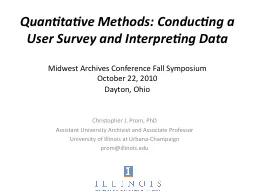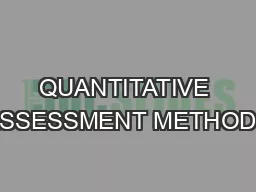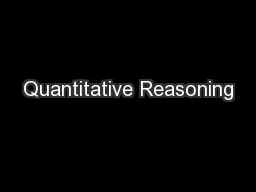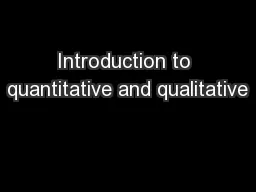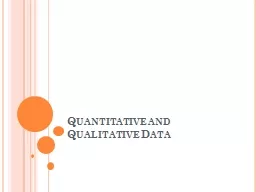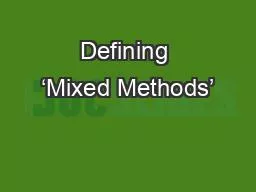PPT-Quantitative Methods: Conducting a User Survey and Interpreting Data
Author : trish-goza | Published Date : 2018-03-11
Midwest Archives Conference Fall Symposium October 22 2010 Dayton Ohio Christopher J Prom PhD Assistant University Archivist and Associate Professor University
Presentation Embed Code
Download Presentation
Download Presentation The PPT/PDF document "Quantitative Methods: Conducting a User ..." is the property of its rightful owner. Permission is granted to download and print the materials on this website for personal, non-commercial use only, and to display it on your personal computer provided you do not modify the materials and that you retain all copyright notices contained in the materials. By downloading content from our website, you accept the terms of this agreement.
Quantitative Methods: Conducting a User Survey and Interpreting Data: Transcript
Download Rules Of Document
"Quantitative Methods: Conducting a User Survey and Interpreting Data"The content belongs to its owner. You may download and print it for personal use, without modification, and keep all copyright notices. By downloading, you agree to these terms.
Related Documents

